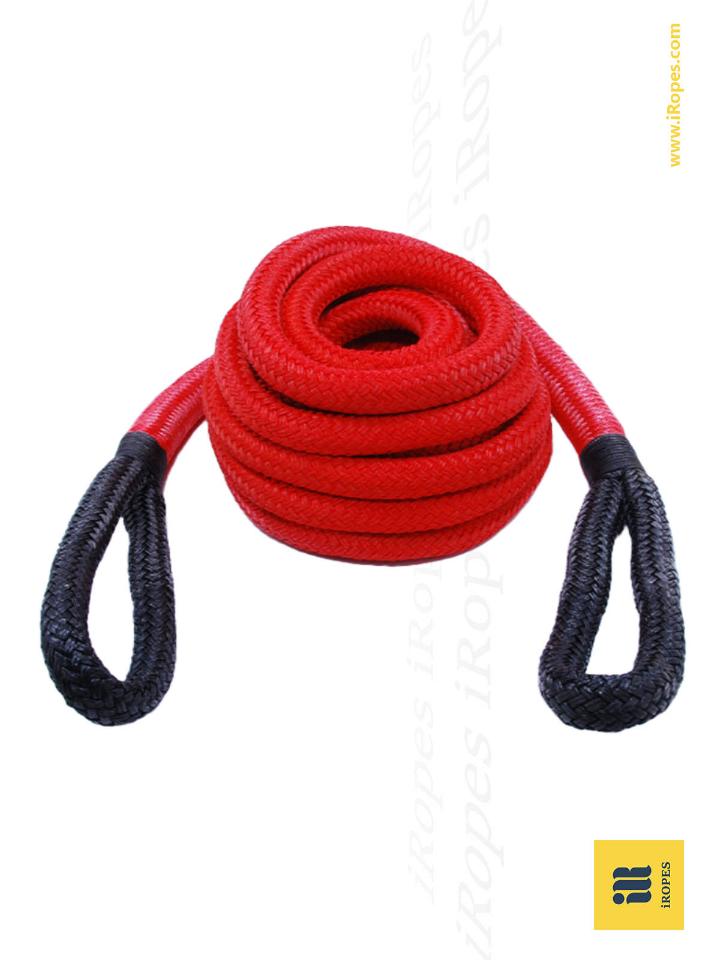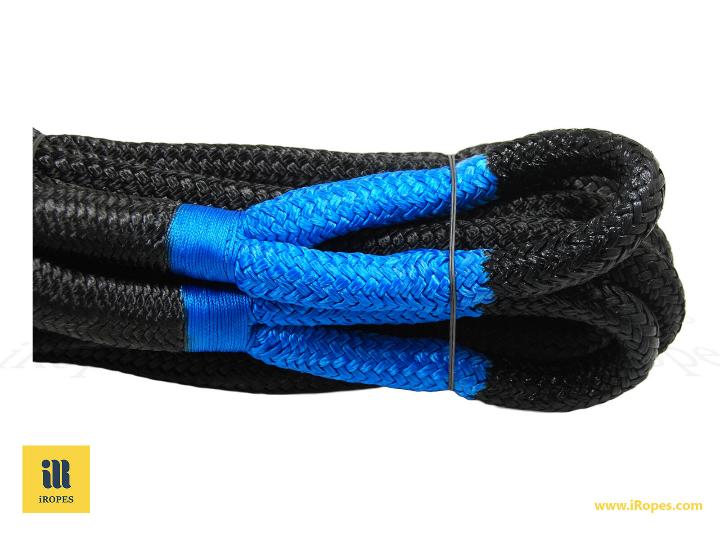Imagine you're an avid climber, scaling towering cliffs and navigating treacherous terrains. Your life quite literally hangs by a thread – a nylon rope that must withstand the immense strain and unpredictable forces of nature. In this exhilarating world, the choice between nylon 6 and nylon 6,6 ropes could mean the difference between life and death.
Or perhaps you're a marine engineer, tasked with securing heavy machinery on a vessel that will brave the turbulent seas. The ropes you select need to be resilient enough to endure the relentless onslaught of waves, saltwater, and harsh weather conditions. Once again, the decision between nylon 6 and nylon 6,6 ropes is a critical one, with far-reaching implications for the safety and success of your operation.
Whether you're an adrenaline-seeking adventurer or a pragmatic industrial professional, understanding the nuances of nylon rope types is paramount. Nylon 6 and nylon 6,6 may seem like mere variations of the same material, but their distinct properties make them suited for vastly different applications. In this comprehensive guide, we'll delve into the key differences between monofilament and multifilament nylon ropes, arming you with the knowledge to make informed choices that ensure optimal performance and longevity.
Overview of Nylon Rope Types
Nylon is a versatile synthetic material renowned for its strength, durability, and elasticity, making it an ideal choice for rope manufacturing. In the world of nylon ropes, two distinct types stand out: nylon 6 and nylon 6,6. These ropes differ not only in their chemical composition but also in their unique properties and applications.
Nylon 6 and Nylon 6.6 Ropes
Nylon 6 and nylon 6,6 ropes are the two primary forms of nylon used in rope production. While they share similarities, there are distinct differences that set them apart.

Nylon 6 is a type of polyamide made from a single building block, known as caprolactam. Its melting point is lower than that of nylon 6,6, making it more affordable and suitable for applications that don't require extreme heat resistance.
Nylon 6,6, on the other hand, is made from two different building blocks: hexamethylenediamine and adipic acid. This unique composition gives nylon 6,6 ropes superior strength, durability, and a higher melting point, making them ideal for applications that demand exceptional performance and heat resistance.
Braided Nylon Ropes
Braided nylon ropes are created by interweaving multiple strands in an intricate, tightly-woven pattern. This construction method results in a rope that is exceptionally strong, flexible, and resistant to abrasion. Braided nylon ropes are often used in applications where they need to run smoothly over pulleys, blocks, or other hardware, such as in sailing, climbing, and industrial lifting.
MATERIAL: Nylon core Nylon cover
CONSTRUCT: double braided
ELONGATION: 30%
Twisted Nylon Ropes
Unlike their braided counterparts, twisted nylon ropes are made by twisting or laying individual strands together in a spiral pattern. This construction method creates a rope that is more resistant to unraveling and easier to splice. Twisted nylon ropes are commonly used in fishing, marine applications, and other industries where splicing and tying knots are essential.
Understanding the differences between these nylon rope types is crucial for choosing the right rope for your specific needs. Whether you require the affordability and lightweight nature of nylon 6 or the superior strength and heat resistance of nylon 6,6, the right choice can make a significant difference in your project's success.
Advantages and Disadvantages of Nylon 6 Ropes
When it comes to nylon ropes, the nylon 6 variety stands out for its affordability and versatility. However, it's essential to understand both the advantages and disadvantages of this material to ensure you're making the right choice for your specific application.

Advantages of Nylon 6 Ropes
- Affordability: One of the primary advantages of nylon 6 ropes is their cost-effectiveness. As a widely available material, nylon 6 is generally more affordable than its counterpart, nylon 6,6, making it an attractive option for budget-conscious projects.
- Lightweight: Nylon 6 ropes are remarkably lightweight, which can be a significant advantage in applications where weight is a concern, such as climbing or camping.
- Abrasion Resistance: These ropes are known for their excellent resistance to abrasion, ensuring durability even in demanding environments where friction is a factor.
- Chemical and UV Resistance: Nylon 6 ropes are resistant to many chemicals and UV radiation, making them suitable for outdoor applications or environments with chemical exposure.
With these advantages, nylon 6 ropes are widely used in various applications, including camping, hiking, gardening, boating, and light-duty industrial settings.
Disadvantages of Nylon 6 Ropes
- Lower Strength and Melting Point: Compared to nylon 6,6, nylon 6 ropes have a lower tensile strength and a lower melting point, making them less suitable for applications that require exceptional strength or high-temperature resistance.
- Water Absorption: Nylon 6 ropes can absorb water, which can lead to a reduction in strength and increased susceptibility to mildew or rot when wet.
- Staining: These ropes are prone to staining, which can be an issue in applications where appearance is important.
While nylon 6 ropes offer many advantages, it's crucial to consider their limitations and potential drawbacks. Applications involving heavy loads, extreme temperatures, or prolonged exposure to water may require the use of more robust nylon 6,6 ropes.
Suitable Applications for Nylon 6 Ropes
Nylon 6 ropes are well-suited for a wide range of applications where their strengths can be leveraged while minimizing their weaknesses. Some common uses include:
- Camping and Hiking: The lightweight and affordable nature of nylon 6 ropes make them an excellent choice for camping and hiking gear, such as tent lines, guy ropes, and pack lashing.
- Gardening and Landscaping: Their resistance to chemicals and UV radiation makes nylon 6 ropes ideal for gardening and landscaping tasks, like securing plants or tying down tarps.
- Light Industrial Applications: In light-duty industrial settings where extreme temperatures or heavy loads are not a concern, nylon 6 ropes can be a cost-effective solution for securing loads, tying down equipment, or general rigging tasks.
Remember, while nylon 6 ropes offer many advantages, it's crucial to carefully evaluate your specific requirements and consider the potential limitations to ensure optimal performance and safety in your chosen application.
Exploring the Advantages and Disadvantages of Nylon 6,6 Ropes
In the world of rope manufacturing, nylon 6,6 stands out as a premium material renowned for its exceptional strength and durability. These ropes are designed to withstand demanding applications, making them a popular choice across various industries. However, like any material, nylon 6,6 also comes with its own set of drawbacks that should be carefully considered.
Strength and Durability: The Key Benefits of Nylon 6,6 Ropes
- Unparalleled Tensile Strength: One of the most significant advantages of nylon 6,6 ropes is their superior tensile strength. These ropes can withstand tremendous loads, making them ideal for heavy-duty applications such as industrial lifting, towing, and load securing. Whether you're working on a construction site or navigating treacherous terrains, nylon 6,6 ropes offer the strength you can rely on.
- Exceptional Durability: Nylon 6,6 ropes are built to last. Their resistance to abrasion, rot, mildew, and UV radiation ensures that they maintain their structural integrity even in harsh environments. Whether you're battling the elements outdoors or dealing with harsh chemicals, these ropes will stand the test of time, providing reliable performance for years to come.
Industries such as construction, mining, and marine operations often rely on nylon 6,6 ropes due to their proven strength and durability. From securing heavy machinery to mooring vessels in turbulent waters, these ropes are trusted companions in challenging environments.
Drawbacks and Limitations: What to Consider with Nylon 6,6 Ropes

- Lower Melting Point: While nylon 6,6 ropes boast impressive strength and durability, they have a relatively lower melting point compared to other high-performance materials like aramids. This means that they may not be the best choice for applications involving prolonged exposure to extreme heat or high temperatures.
- Moisture Absorption: Like many synthetic fibers, nylon 6,6 ropes can absorb moisture from the environment. This moisture absorption can lead to a temporary reduction in the rope's strength and durability, making it essential to store and handle them properly to minimize exposure to moisture.
- Chemical Considerations: While nylon 6,6 ropes are generally resistant to many chemicals, they may release harmful substances when exposed to high temperatures or certain chemicals. Proper precautions and safety measures should be taken when using these ropes in environments with chemical exposure.
When selecting nylon 6,6 ropes, it's crucial to carefully evaluate the specific requirements of your application. Factors such as temperature range, chemical exposure, and load requirements should be taken into account to ensure optimal performance and safety.
By understanding both the advantages and drawbacks of nylon 6,6 ropes, you can make an informed decision and choose the right rope for your needs. Remember, the key to success lies in balancing the desired performance characteristics with the potential limitations of the material, ensuring a safe and efficient operation in any environment. For more insights on the versatile uses of synthetic ropes, you can explore why synthetic ropes outperform wire winch cables.
Factors to Consider When Choosing Between Nylon 6 and Nylon 6,6
When it comes to selecting the right nylon rope for your needs, it's crucial to understand the key differences between nylon 6 and nylon 6,6. While both materials offer unique advantages, the choice between them should be based on a careful consideration of your specific requirements and intended use.
Key Differences Between Nylon 6 and Nylon 6,6
Let's start by exploring the fundamental differences between these two nylon types. Nylon 6 is a polyamide made from a single building block called caprolactam, while nylon 6,6 is made from two different building blocks: hexamethylenediamine and adipic acid. This subtle difference in chemical composition translates into distinct physical properties and performance characteristics.

Nylon 6,6 ropes generally exhibit higher strength, rigidity, and a higher melting point compared to nylon 6 ropes. This makes them more suitable for applications that demand exceptional performance and heat resistance. On the other hand, nylon 6 ropes are more affordable, lightweight, and resistant to abrasion, making them an excellent choice for budget-conscious projects or applications where weight and cost are important factors.
Applications and Uses of Nylon 6 and Nylon 6,6
The unique properties of each nylon type lend themselves to different applications and uses. Nylon 6 ropes are commonly used in textiles, carpeting, fishing lines, and various industrial components where affordability and lightweight construction are prioritized. In contrast, nylon 6,6 ropes are widely used in engineering, automotive, and industrial applications that require superior strength and durability, such as heavy-duty lifting, towing, and load-securing operations.
Have you ever wondered why some climbing ropes feel more robust and durable than others? Chances are, the more robust ones are made from nylon 6,6, which provides the necessary strength and resilience for such demanding activities. For more information on versatile cordage solutions, you can explore the top uses for braided cordage and rope cordage.
Properties and Characteristics of Nylon 6 and Nylon 6,6
Beyond the basic differences in chemical composition, nylon 6 and nylon 6,6 also exhibit distinct properties and characteristics that should be carefully evaluated based on your specific needs:
- Tensile Strength: Nylon 6,6 ropes generally have a higher tensile strength, making them better suited for applications involving heavy loads or high-stress environments.
- Abrasion Resistance: While both nylon types offer good abrasion resistance, nylon 6 ropes tend to perform slightly better in this regard, making them a preferred choice for applications where friction is a concern.
- Moisture Absorption: Both nylon 6 and nylon 6,6 ropes can absorb moisture from the environment, which can temporarily reduce their strength and durability. Proper storage and handling are essential to minimize this effect.
- Chemical Resistance: Nylon 6,6 ropes generally exhibit better resistance to certain chemicals and solvents, making them more suitable for use in environments with chemical exposure.
As you can see, the choice between nylon 6 and nylon 6,6 ropes is not a straightforward one. It ultimately depends on your specific needs, budget, and the environmental conditions in which the rope will be used. By carefully evaluating these factors, you can make an informed decision and select the nylon rope type that offers the best performance and longevity for your application. If you're interested in further exploring different rope solutions, check out our guide on premium quality rope solutions for every industry.
Discover the Right Nylon Rope for Your Needs
Understanding the differences between nylon rope types, specifically nylon 6 and nylon 6,6, can significantly impact your project's success. Nylon 6 ropes are affordable, lightweight, and abrasion-resistant, ideal for camping, hiking, and gardening. Conversely, nylon 6,6 ropes offer superior strength and durability, making them suitable for heavy-duty applications like industrial lifting and towing. By assessing your needs, performance requirements, and environmental conditions, you can select the most appropriate nylon rope type. Fill in the form above to explore customised rope solutions for your specific needs and ensure optimal performance and longevity.